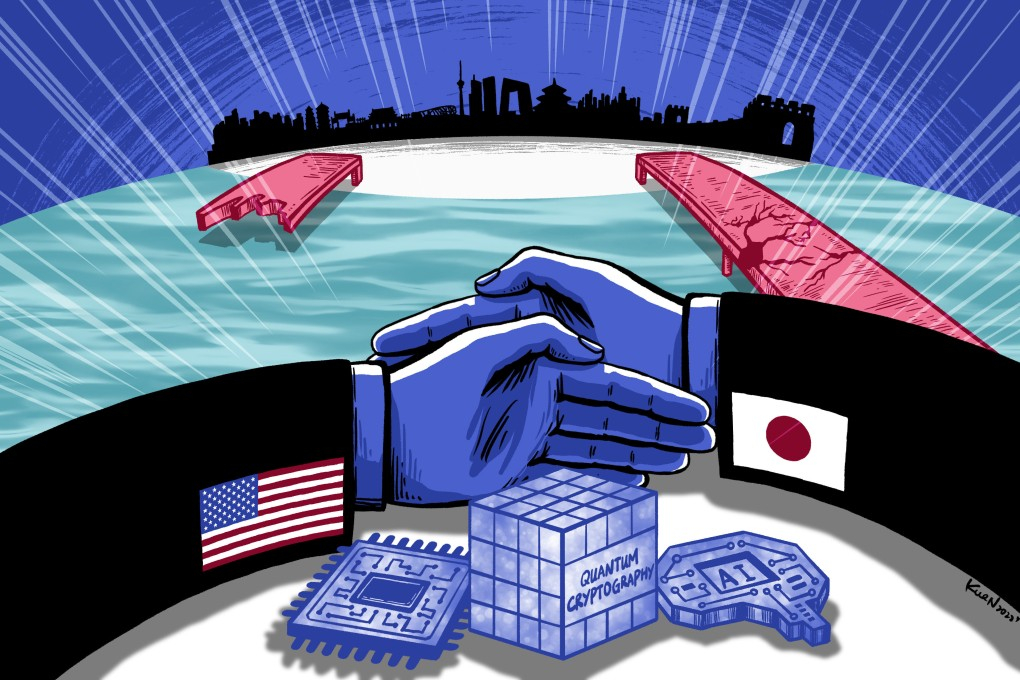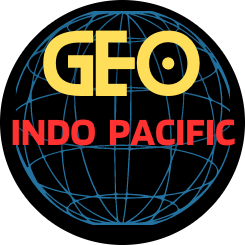
From joint ventures to licensing deals, biotechnology is emerging as a strategic bridge between China and Japan.
Chinese President Xi Jinping proclaimed: “Biopharmaceuticals is a strategic emerging industry vital to China’s economic growth, public welfare, and national security.” For seasoned China watchers, this kind of framing sets off alarms. When Xi invokes “national security,” it usually signals two things: a sweeping mobilization of resources at home, and a more aggressive posture abroad. Although the Chinese Communist Party (CCP) has employed the term more liberally as of late, Xi typically reserves this language for only his highest priorities.
Over the past few years, biopharma has joined the elite ranks of industries like artificial intelligence (AI), semiconductors, and rare earths – pillars of Beijing’s pursuit of “high-quality development” and technological self-sufficiency. As China races to close the tech gap with the United States, the life sciences have moved to the forefront of the CCP’s strategic playbook.
Once regarded as a one-trick pony in the manufacturing of generic drugs, China’s biopharma industry is now consistently rolling out groundbreaking drugs at low costs and delivering top-quality services at competitive prices, while Chinese companies are establishing themselves as major players in the globally-integrated life sciences sector. BGI Genomics and MGI Tech have emerged as industry leaders in human DNA sequencing, while WuXi AppTec and WuXi Biologics are now at the forefront of global contract drug research and development.
At the same time, China’s pharma footprint in the United States is surging. According to a 2023 Atlantic Council report, in 2020, the United States purchased only 1 percent of its total imported drugs from China. By 2022, however, China’s share had jumped to nearly 8 percent – a staggering increase in just two years.
As Chinese drugs gained a foothold in the U.S. market, U.S. policymakers began to express their concerns. China’s ascent posed a dual threat to both big pharma and U.S. national security, fueling Thucydidean fears of escalating geopolitical and economic rivalry. Under former President Joe Biden and now President Donald Trump, these anxieties have swiftly evolved into a wave of sanctions, tariffs, and other protectionist measures designed to safeguard U.S. interests against Chinese power.
Passed by the House in September 2024, the Biosecure Act took a particularly hardline stance on Chinese biotech, denying top firms access to U.S. pharma supply chains. The bill forced U.S. companies to cut ties with key contractors – most notably, WuXi AppTec – citing national security concerns. WuXi wasted no time firing back, slamming the decision as an illegal rush to judgment and insisting the company poses no security threat to the United States or any other country. The bill has not been passed by the Senate or become law, but could be revisited – particularly as Trump seeks ways to indigenize the U.S. biopharma industry.
In response to U.S. decoupling, China’s biopharma sector is recalibrating – diversifying its investment risks, expanding its footprint beyond traditional markets, and embracing agile, cost-effective business strategies built to withstand geopolitical turbulence. According to Carnegie China’s Xue Gong, Chinese biotech firms are now turning their focus to Southeast Asia, eyeing the region’s largely untapped pharmaceutical markets. In light of China-U.S. great power competition, this pivot raises a key question: who will China choose as its next biotech partner?
Enter Japan: China’s longtime competitor and a biotech heavyweight in its own right. Since the late 2000s, Japanese pharma giants including Takeda, Otsuka, and Eisai have teamed up with Chinese firms to tap into the booming drug market in China. But as China’s biotech scene has shifted from copycat to cutting-edge, the flow of innovation has started to reverse.
Consider fruquintinib, a treatment for colorectal cancer developed by HUTCHMED’s Shanghai labs in 2018. After proving its success at home and in global trials, Takeda snapped up exclusive worldwide rights in 2023. Less than a year later, fruquintinib cleared regulatory hurdles in Japan and the United States, becoming a first-in-class colorectal cancer drug in both markets.
These licensing deals open doors for innovative firms to take their products global – collecting royalties without the heavy lift of navigating foreign markets or complex regulatory systems. For licensees, the benefits are just as clear: exclusive rights to manufacture and distribute, access to advanced tech and expertise, and the potential for deeper partnerships down the line – all of which offer a strategic edge domestically.
China’s massive market and streamlined drug approval process make the country increasingly attractive for Japanese firms looking for high profit potential and brisk go-to-market solutions. With China doubling down on innovation, its capacity to develop high-impact drugs for global export is rising equally fast.
In May 2023, Eisai inked a joint development deal with Hangzhou-based BlissBio to co-develop BB-1701, a promising antibody-drug conjugate targeting breast and other cancers. The agreement – worth up to $2 billion in milestone payments from Eisai to BlissBio – goes beyond traditional licensing. Incorporating IP sharing and deep R&D collaboration, it signals a clear shift: Eisai isn’t just tapping China for scale, it’s betting on its innovative edge. The move underscores Japan’s recognition that China isn’t just catching up in biotech; it’s helping set the pace.
This innovative bent is all the more striking given China’s reputation as a manufacturing hub. In a recent interview with Asia Society, Gary Rieschel, co-founder of Qiming Venture Partners – one of China’s top healthcare venture capital firms – sets the record straight: this innovation wave was not sparked by strategic central planning or early state investment. It was driven by a bold generation of Chinese scientists who returned from abroad in the mid-2000s, brandishing Ivy League degrees and an “innate entrepreneurialism.”
Spotting opportunity in China’s messy, underdeveloped healthcare sector at the time, they launched scrappy startups in diagnostics, reagents, and contract research. Talented scientists and researchers joined, then branched out to found their own startups. Venture capital poured in. Fueled by the concomitant rise of AI and big data capabilities, this homegrown network of biotech entrepreneurs laid the groundwork for a world-class innovation engine – well before state support ever came into play.
Entrepreneurialism aside, Beijing is no longer merely cheering from the sidelines. Beyond generous R&D subsidies and supportive rhetoric, the CCP has reshaped the domestic regulatory and IP landscapes to attract foreign investment. But the real game-changer? Policy hitting the pavement. The government has rolled out joint innovation hubs and development zones designed to get Chinese and Japanese firms building together. And the momentum is nationwide.
In July 2020, China and Japan signed off on 13 joint biopharma industry projects in Tianjin totaling 50 billion yuan ($7.1 billion), leading to the creation of the China-Japan Health Industry Development Cooperation Demonstration Zone – one of six such clusters across China. More recently, the local government of Chengdu partnered with Takeda to launch the Takeda China Innovation Center – a digital hub designed to power the company’s strategy in one of its fastest-growing markets. “China is an important country for Takeda, and we are committed to advancing innovation in the country,” declared CEO Christophe Weber at this year’s China Development Forum.
Joint biotech innovation between China and Japan isn’t just a smart strategy – it’s a high-stakes tech and growth accelerator for both countries. Cross-border partnerships crack open access to new markets, split the burden of cost and risk, and create vital exchanges of talent and tech. On the ground, China’s biotech hubs, manufacturing muscle, and innovative streak pair well with Japan’s precision-driven quality control and R&D prowess, establishing a solid foundation for regional biotech pipelines.
And when it comes to tech, their complementary expertise in distinct subsectors could fast-track the next wave of global biotech breakthroughs. Japanese firms can supercharge their well-established clinical research frameworks by leveraging China’s AI and big data technologies, speeding up drug discovery. Meanwhile, Chinese firms can tap into Japanese expertise in regenerative medicine and stem cell research to level up its own stem cell therapy and biobanking initiatives.
Both countries are also staring down the same demographic cliff: aging societies with skyrocketing healthcare needs. Joint biotech ventures offer a way to tackle this silver economy crunch together, while also (if a bit distastefully) fueling sector growth and pushing forward innovative treatments in both markets. But there’s a catch: who foots the bill? With fewer young people supporting a ballooning elderly population, policymakers, insurers, and biopharma will have to strike a delicate balance between product innovation, profitability, and affordability in the coming decades.
Perhaps most crucially, biotech collaboration between China and Japan doubles as quiet diplomacy. Amid historical tensions, territorial disputes, and regional and maritime security concerns, biopharma offers rare neutral ground for China and Japan – a space for cooperation over confrontation. This is partly because Japan’s regulatory focus leans more commercial than strategic, and biotech – unlike semiconductors or AI – hasn’t yet been cast as a frontline tech in Tokyo’s security playbook. Shared economic interests and a mutual need to tackle aging populations have also kept the door open. For now, a practical need for innovation – not ideology – is driving the relationship in biotech.
For China and Japan, working together on sensitive research involving genomic data, vaccine development, and biomanufacturing doesn’t just push the science forward; it builds mutual institutional trust. Tighter supply chain integration and shared R&D fosters strategic interdependence, thawing tensions and opening the door to wider scientific collaboration. With aging populations on both sides, biotech’s inherent humanitarianism also carries the power to shift public sentiment and soften long-standing animosities on the societal front.
Naturally, the humanitarian angle stretches far beyond bilateral relations. Rather than vying for regional dominance, biotech gives China and Japan a platform to co-lead Asia – and the world – on urgent, universally-resonant pain points, including healthcare and food security. These shared priorities send a clear message to the region – collaboration, not competition, represents the future of Asian development. Recent Chinese and Japanese biotech ventures in Southeast Asia point to just that, showcasing the scalable promise of ASEAN+3 partnerships and laying the groundwork for a truly pan-Asian biopharma pipeline.
Regionalism is becoming increasingly vital as U.S. isolationism picks up speed. Beyond the industry-specific Biosecure Act, Trump’s United States has shown an unrelenting desire to upend long-standing alliances and diplomatic norms. His latest tariff spree hasn’t just hit China; Japan and other allies have also been caught in the crossfire. While a 90-day pause on “reciprocal” tariffs may offer Japan some reprieve, sector specific tariffs on automobiles, steel, and other goods are still cause for concern.
Asia Society’s Emma Chanlett-Avery warned that this constant “whipsaw of policy changes” may eventually erode Tokyo’s trust in the Japan-U.S. security alliance. In the face of U.S. unpredictability, Japan has every incentive to double down on regional ties. And with Trump unlikely to ease up on China anytime soon, Xi would be equally wise to solidify his country’s standing in Asia as a counter to “America First” policies.
The next time Xi sits down with Japanese Prime Minister Ishiba Shigeru, he’d be smart to put biotech at the top of their agenda. The stakes are high: In a world where U.S. decoupling is real and accelerating, biotech is Beijing’s shot to outmaneuver Washington and tighten regional ranks in one move.





